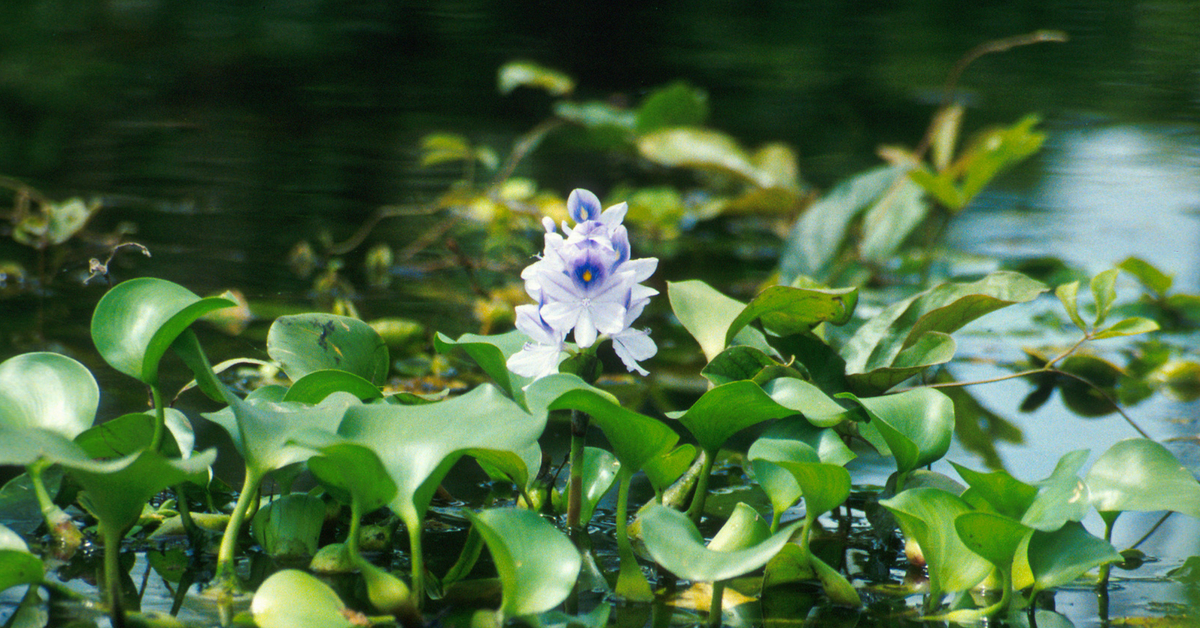Water Hyacinth Destroying Lakes? IICT Makes 100 Tonne Organic Manure From It!
In a path-breaking move that could be adopted across urban lakes in the country, Hyderabad-based Indian Institute of Chemical Technology (IICT) and Khar Energy Optimisers converted water hyacinth from the Kapra Lake into organic manure for farming.

For years uncontrolled water hyacinth, an invasive species has posed a grave threat to the aquatic ecosystem.
This invasive species that covers lakes and ponds is infamous for affecting water flow, blocking sunlight from reaching native aquatic plants, thus, killing them, becoming a breeding ground for mosquitoes or parasites and depleting dissolved oxygen, threatening life under these water bodies.
But what if we told you, this threatening species could boost vegetation if used innovatively?
Yes, in a path-breaking move that could be adopted across urban lakes in the country, Hyderabad-based Indian Institute of Chemical Technology (IICT) and Khar Energy Optimisers converted water hyacinth from the Kapra Lake into organic manure for farming.

Water hyacinth was being removed from the lake since November 2017, and the project is now in its final stages, reported The Times of India.
Speaking to the publication, CEO of Khar Energy, Raju L Kanchibhotla said, “Around 100 tonnes of useful organic soil conditioner has been prepared, which can be used for farming with water hyacinth, removed from Kapra Lake.”
The process used to convert water hyacinth into organic manure is called Accelerated Anaerobic Composting (AAC). Here’s all you need to know about it:
- In this process, the first step is to remove water hyacinth from the water body. After retrieval, it is dumped on the shore using an earth mover.
- Once dumped on the shore, the roots of the water hyacinth are separated with stems and leaves and chopped into small pieces. The resulting components are then filled into composite pits.
- A ratio of 90% water hyacinth material, 8% dung and 2 % bioculam liquid (which is bacteria) is required to facilitate the composting process.
- The resulting mixture or compost is a paste-like material which is then removed and dried on tarpaulins (heavy-duty waterproof cloth) to turn into manure.
- Once dry, the compost is filled into bins, packed and sent to a warehouse, where it is later crushed into a powder.
Read more: Water Hyacinths Killing Your Lake? These Kerala Researchers Will Save It!
Raju L Kanchibhotla says that this organic soil conditioner or manure meets the prerequisites laid out by the Fertiliser Authority of India, and has, therefore, been approved.
“We are planning to dispatch it in markets by June,” he told TOI.
Thanks to the Greater Hyderabad Municipal Corporation (GHMC), which allowed the clearance of water hyacinth from the Kapra lake, 30 staffers gained employment opportunities to make the manure.
If the model is replicated, it could go a long way in not just cleaning water bodies, but also creating employment opportunities and promoting organic farming!
(Edited by Shruti Singhal)
Like this story? Or have something to share?
Write to us: [email protected]
Connect with us on Facebook and Twitter.
NEW: Click here to get positive news on WhatsApp!
If you found our stories insightful, informative, or even just enjoyable, we invite you to consider making a voluntary payment to support the work we do at The Better India. Your contribution helps us continue producing quality content that educates, inspires, and drives positive change.
Choose one of the payment options below for your contribution-
By paying for the stories you value, you directly contribute to sustaining our efforts focused on making a difference in the world. Together, let's ensure that impactful stories continue to be told and shared, enriching lives and communities alike.
Thank you for your support. Here are some frequently asked questions you might find helpful to know why you are contributing?


This story made me
-
97
-
121
-
89
-
167














